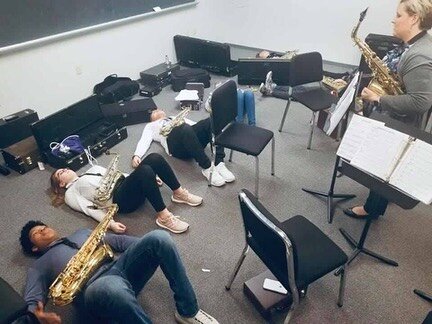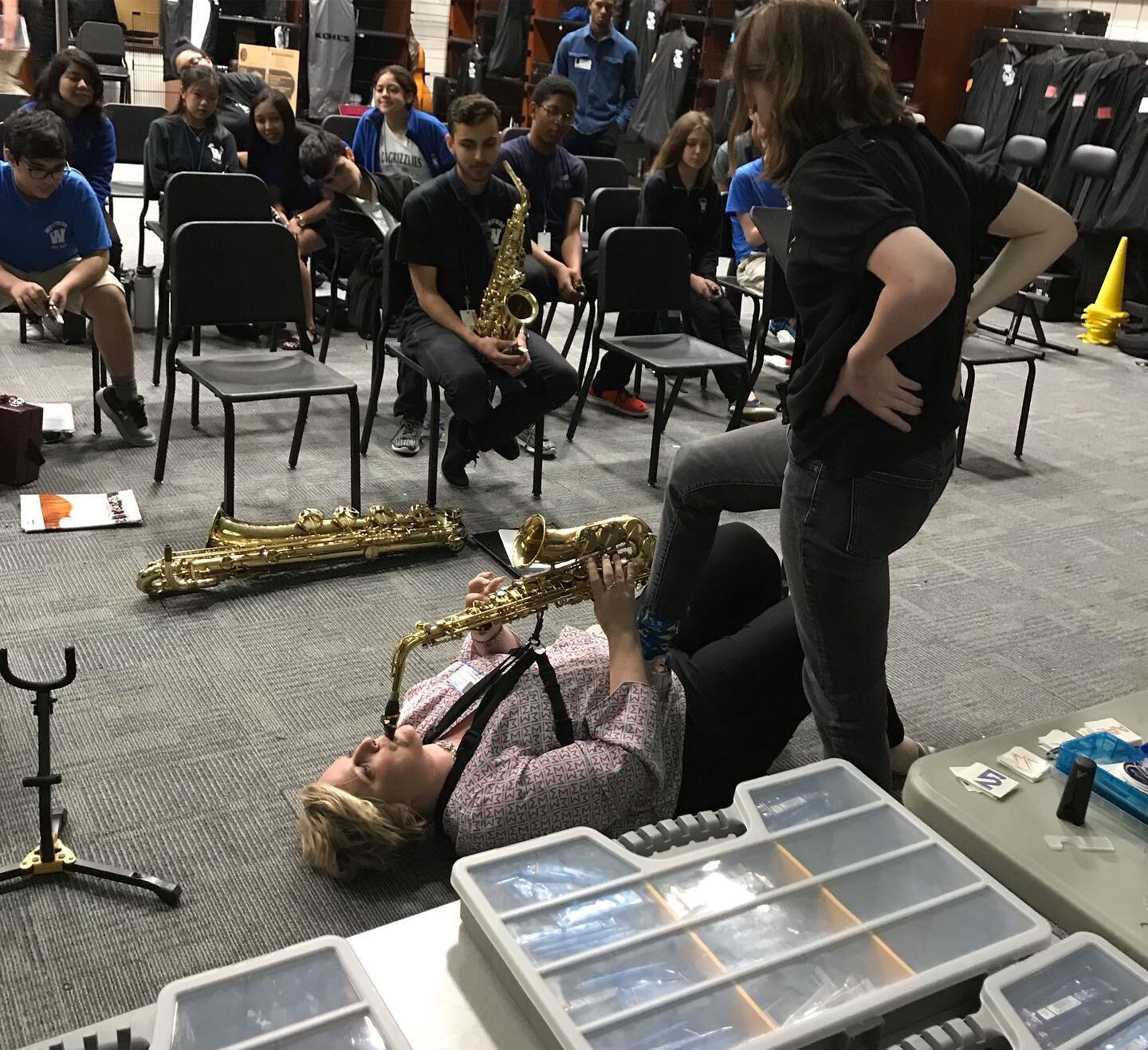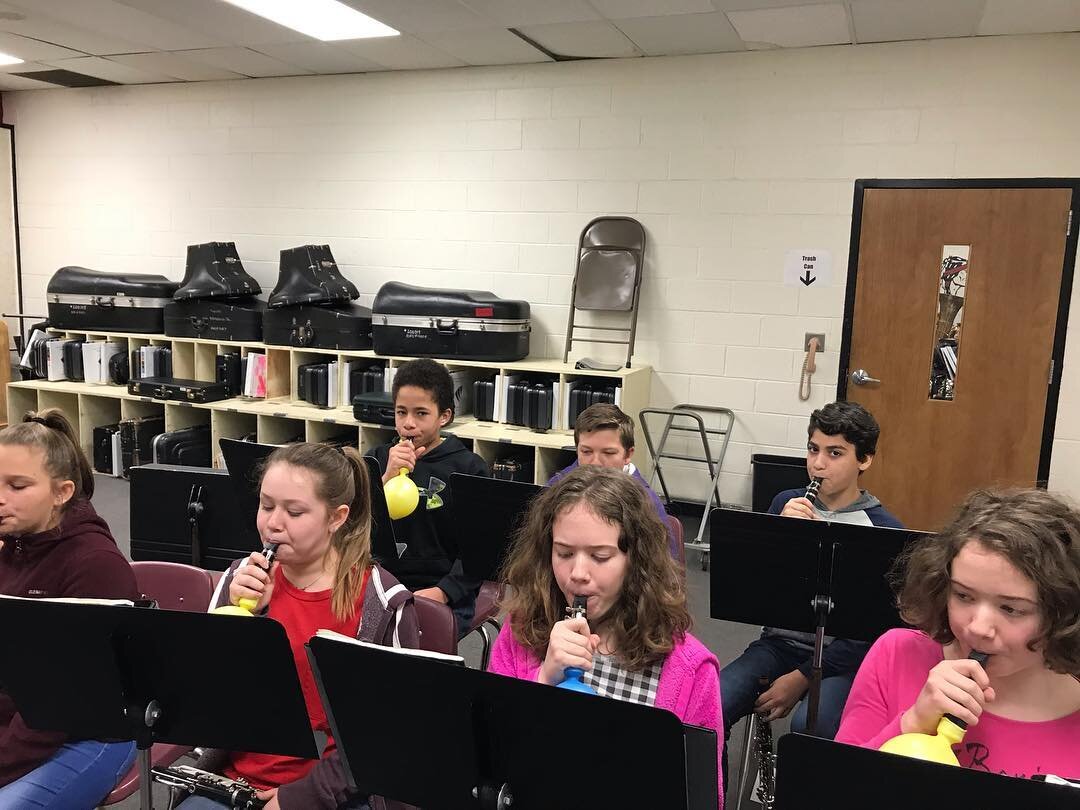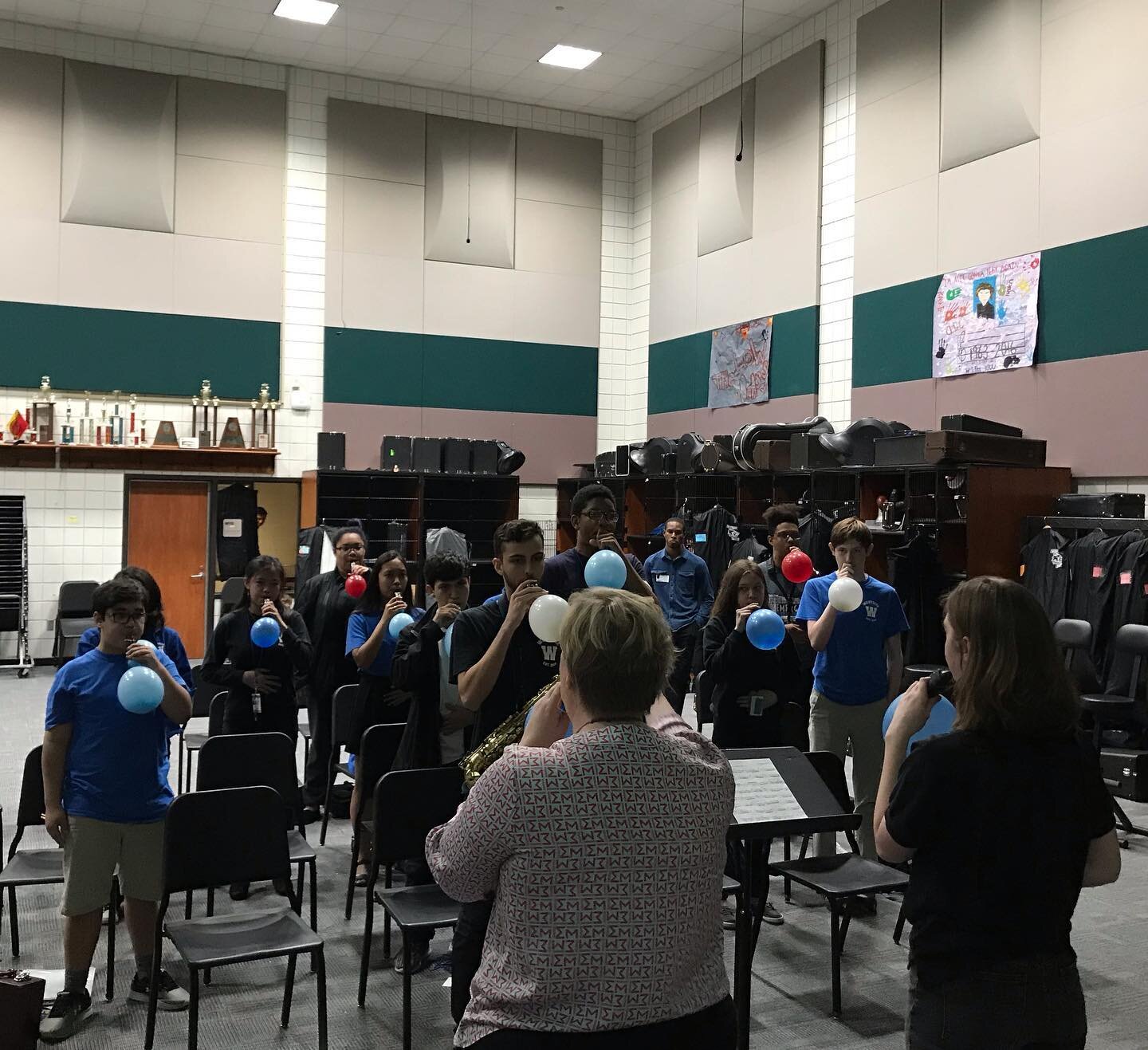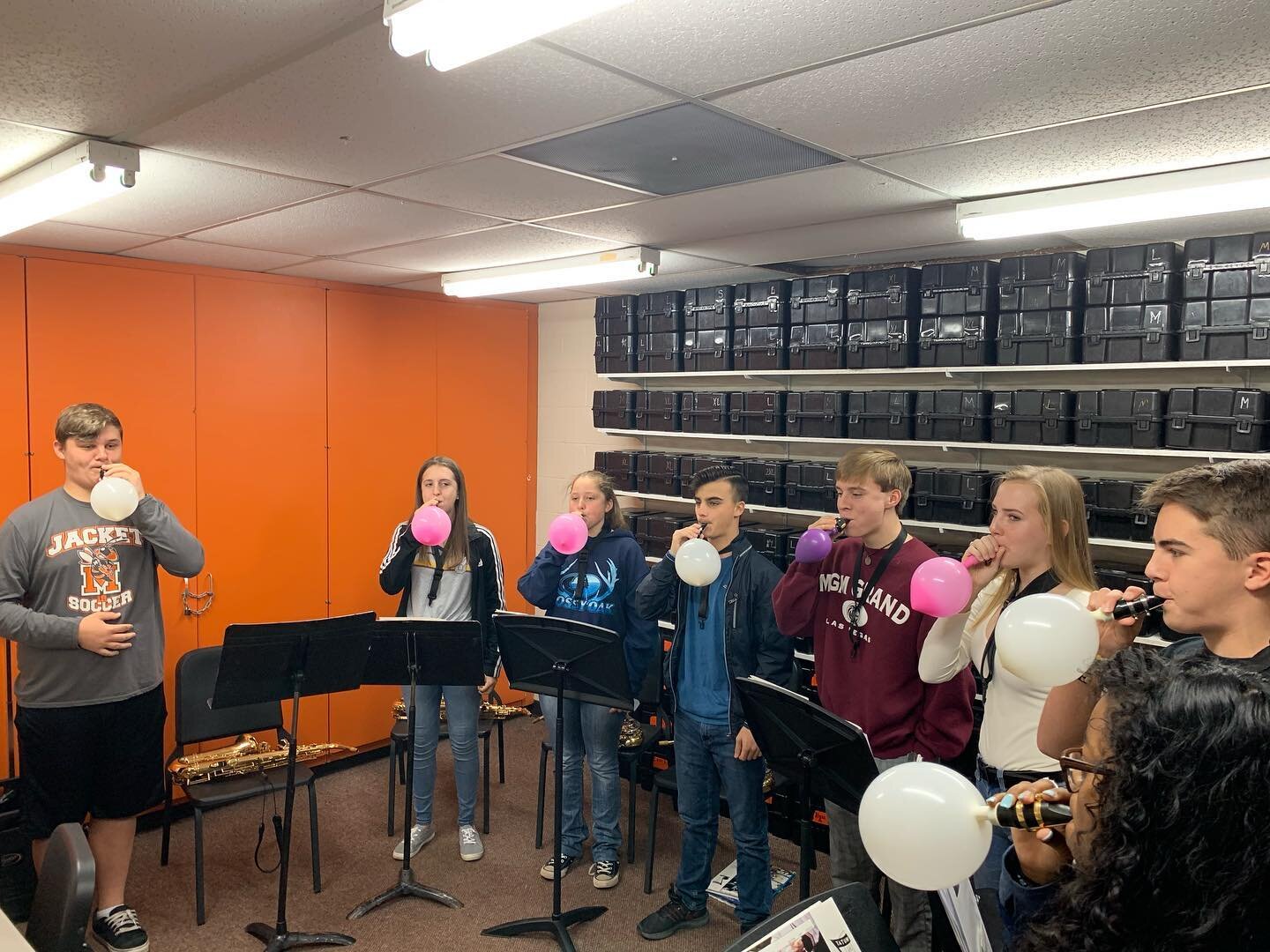What is the deal with balloons?
It’s here! The inaugural blog post!!
For my first venture into this new arena I thought I would tackle a question that has been posted to many pictures from various Vandoren clinics.
Quick note: I am a Vandoren Artist-Clinician (SHOUTOUT TO VANDOREN!) and if you don’t know what that means…
The goal for the Vandoren Artist-Clinician program is to enhance the quality of the music experience through education and the assistance of Vandoren. These highly trained professional educators and performers will engage your students through educational and fun sessions. The clinics they conduct cover a broad spectrum of topics and, based on your input, can be customized to fit the needs of your students. Contact us today to arrange your free Vandoren clinic.
So if you are interested in having me out to do a free clinic at your school please visit my the clinics page on my website.
Every spring the Vandoren Artist-Clinicians gather for a summit to reflect on the year and share ideas. In addition, Vandoren shares product information and gives us great tools that we can go out into the world and mix with our own pedagogy to enhance our workshops. The Balloon Trick came from the 2016 Vandoren Artist-Clinician Summit in Los Angeles, CA and I have been utilizing it ever since!
General Thoughts on Air
AIR FIXES EVERYTHING!
Without good air and good support every aspect of our playing suffers. In my opinion, saxophonists have LAZY air! Throughout my studies as a saxophonist, not much time was spent on air. In fact, I feel like I never really knew how to control my air until I began seriously studying flute. Since discovering my air was a problem, I have made it my mission to make sure students understand how to breathe and support and utilize their core when they are playing. Unfortunately, most of our instruction happens while sitting down, so getting students to utilize their core while seated is definitely a trick!
When I explain air, I describe it as two processes. The inhalation and the exhalation. Most students are fairly good at the inhalation, however, for some reason when students get a bright, shiny object in their hands they automatically decide it’s time to raise their shoulders when they inhale. Therefore, it is always good to remind them of what relaxed breathing feels like. The exhalation process is the one that I feel students lack because so much of our talks on breathing focuses on taking a good inhale, but not supporting through the exhale.
One way I get students to realize what relaxed breathing is like and how much core support they need (inhale and exhale) while playing is by having them lay down on the floor. Here’s the process:
Have students lay flat on their back with their feet flat on the floor and their knees up. (note: this will ensure that their entire back is supported by the floor)
Next I’ll have students rest something on their stomach. It could be their saxophone, a small case, a stuffed animal (I have Pongo the air penguin in my office).
As students inhale I have them notice the height to which what is resting on their stomach reaches. In addition, I also have them notice how their lower back pushes into the floor.
After several times inhaling and working on filling up the “inner tube” around our waist, I will have the students add their exhalation. This time however high the product on their waist got on the inhale they will try to hold it at that level as they exhale.
Once students go through this process they also realize how much air it takes to actually support their sound and they realize they haven’t been engaging their core.
Note: after describing inhale and exhale I do discuss how air is a constantly moving thing (either in or out) and at no point should your air stop flowing in either direction.
Other ways I have utilized for students to realize how much core support they should be using are:
Boat pose (yoga trick)
Sitting in a chair and holding their feet up (not touching the ground)
Wall-sits or just plain squatting
Sitting on an exercise ball
Standing up on one foot. When students have to balance on one foot their core is automatically engaged.
Students are only allowed to sit back down once the students feel how much core support it actually takes to play.
The Balloon Trick
Full disclaimer: I DID NOT come up with this idea!
The balloon trick, I believe, was started by a clarinet teacher on the West Coast (and if someone knows, please feel free to comment). Much like the ideas above, the goal is to get the students to understand just how much core support is needed when they play.
Here’s what to do:
Always ask if anyone has an allergy to latex before passing out balloons!
Have the saxophonists affix the balloon to the end of their mouthpiece
Have the Bb clarinetists affix the balloon to the end of their barrel and the Bass Clarinetists affix the balloon to the end of their mouthpiece
NOTE: This works best if you have one person hold the mouthpiece, and one person put the balloon on the end. Saves in balloon rips and mouthpiece drops!
Next have the students
Set their embouchure
Breathe through the corners of their mouth (not through mouthpiece because they can’t and because we don’t want them breathing through their instruments)
Close corners
Fill up the balloon (they can make sound or not, either is fine)
This trick is VERY telling of the students who are supporting and who definitely are not. Those who aren’t supporting their sound will see their balloon barely fill up and others completely fill up. It’s a great comparison for the entire class.
The other wonderful benefit is it is a visual representation of “playing through the phrase.” Later as we are playing through music or scales or anything with a musical phrase I can then reference continuously filling and expanding the balloon - it should constantly be filling.
So there you have it, the balloon trick! I hope you found this helpful and if you have any questions please feel free to reach out!

